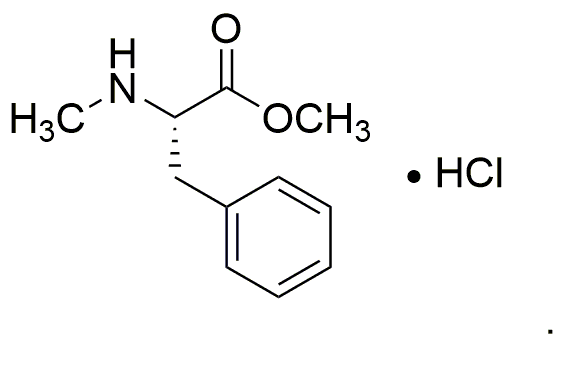Na-Methyl-L-phenylalanine methyl ester hydrochloride is widely utilized in research focused on:
- Pharmaceutical Development: This compound serves as a building block in the synthesis of various pharmaceuticals, particularly in the development of drugs targeting neurological disorders.
- Peptide Synthesis: It is commonly used in the synthesis of peptides, which are crucial for developing new therapeutic agents and understanding biological processes.
- Biochemical Research: Researchers use this compound to study protein interactions and enzyme activities, aiding in the exploration of metabolic pathways.
- Cosmetic Formulations: The compound can be incorporated into cosmetic products for its potential benefits in skin health, providing a unique advantage over similar compounds.
- Food Industry Applications: It is explored as a flavor enhancer or additive in food products, contributing to improved taste profiles and consumer satisfaction.
General Information
Properties
Safety and Regulations
Applications
Na-Methyl-L-phenylalanine methyl ester hydrochloride is widely utilized in research focused on:
- Pharmaceutical Development: This compound serves as a building block in the synthesis of various pharmaceuticals, particularly in the development of drugs targeting neurological disorders.
- Peptide Synthesis: It is commonly used in the synthesis of peptides, which are crucial for developing new therapeutic agents and understanding biological processes.
- Biochemical Research: Researchers use this compound to study protein interactions and enzyme activities, aiding in the exploration of metabolic pathways.
- Cosmetic Formulations: The compound can be incorporated into cosmetic products for its potential benefits in skin health, providing a unique advantage over similar compounds.
- Food Industry Applications: It is explored as a flavor enhancer or additive in food products, contributing to improved taste profiles and consumer satisfaction.
Documents
Safety Data Sheets (SDS)
The SDS provides comprehensive safety information on handling, storage, and disposal of the product.
Product Specification (PS)
The PS provides a comprehensive breakdown of the product’s properties, including chemical composition, physical state, purity, and storage requirements. It also details acceptable quality ranges and the product's intended applications.
Certificates of Analysis (COA)
Search for Certificates of Analysis (COA) by entering the products Lot Number. Lot and Batch Numbers can be found on a product’s label following the words ‘Lot’ or ‘Batch’.
Numéro de catalogue
Numéro de lot/série
Certificates Of Origin (COO)
This COO confirms the country where the product was manufactured, and also details the materials and components used in it and whether it is derived from natural, synthetic, or other specific sources. This certificate may be required for customs, trade, and regulatory compliance.
Numéro de catalogue
Numéro de lot/série
Safety Data Sheets (SDS)
The SDS provides comprehensive safety information on handling, storage, and disposal of the product.
DownloadProduct Specification (PS)
The PS provides a comprehensive breakdown of the product’s properties, including chemical composition, physical state, purity, and storage requirements. It also details acceptable quality ranges and the product's intended applications.
DownloadCertificates of Analysis (COA)
Search for Certificates of Analysis (COA) by entering the products Lot Number. Lot and Batch Numbers can be found on a product’s label following the words ‘Lot’ or ‘Batch’.
Numéro de catalogue
Numéro de lot/série
Certificates Of Origin (COO)
This COO confirms the country where the product was manufactured, and also details the materials and components used in it and whether it is derived from natural, synthetic, or other specific sources. This certificate may be required for customs, trade, and regulatory compliance.


